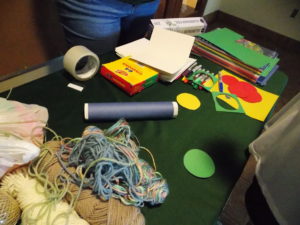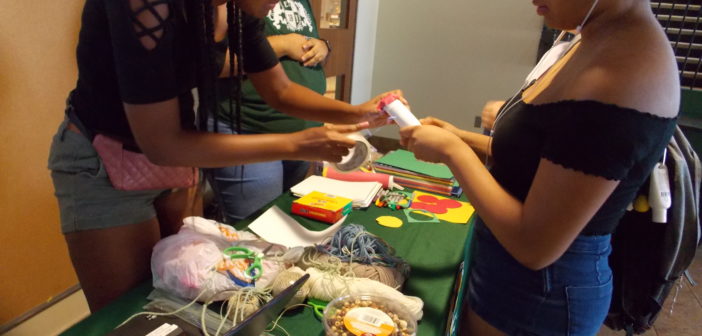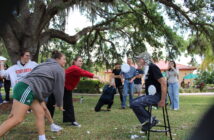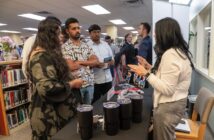By: Brianna Pearson
The Multicultural and International Service Office (MISO), is celebrating Native American History month by creating awareness through crafting. On Nov. 7, MISO held a “Create Your Own Rain Stick” event inviting all students to learn about Native American customs and culture.
Within the first few minutes of the table set up, many were interested and were curious about how to make a rain stick. The table was set up outside of the cafeteria, allowing students who were inclined to, to make the craft after eating lunch with their friends. The table also caught the eye of students for how colorful it was as it was covered with construction paper, lentils and markers. Carla Sanchez, a sophomore political science major, was able to explain the origin story of the rain stick to many intrigued students.
The origin of the rain stick started a very long time ago in Native American history. Sanchez stated, “This was used, and probably still used today, by the Native Americans to call on the gods for rain.” When a rain stick is turned over, it sounds like droplets of water hitting the ground like they would during a rain shower. Native Americans would do this in times of drought when they needed the water for their crops and rivers.

Credit: Brianna Pearson
The original rain sticks were created by “dead cactuses with their spines pushed into them” stated Sanchez. Once a cactus is dead and dried, the spines are pushed or hammered back into the cactus, sometimes along with little pebbles as well. Once the pebbles are in, the ends of the cactus are sealed off. When the cactus is flipped over, the spines and pebbles fall, mimicking the sound of rain falling.
Of course, the rain sticks made at Saint Leo weren’t made from cacti; instead, they were made out of paper, lentils, aluminum foil and tape. The first step was to make the tube out of a thick paper-like cardstock. Once the tube was made to the size of choice, students could decorate it any way they liked. The next step was to create the coil for the inside of the tube. Professor Paige Ramsey-Hamacher, Executive Director & PDSO Multicultural & International Services Office (MISO), explained that the coil is made by scrunching the aluminum foil up, so it is long like a snake. When it is all long, “wrap it around your finger to make it into a coil” or spring. The spring is then placed into the tube and one side is sealed off with construction paper. After the first end is sealed with construction paper and tape, the lentils are then poured into the open side of the rain stick and then closed off by another round piece of construction paper.
This year the event was just as successful as it has been in previous years. MISO holds this event every year during Native American History month, so keep an eye out next year to make a rain stick of your very own!





